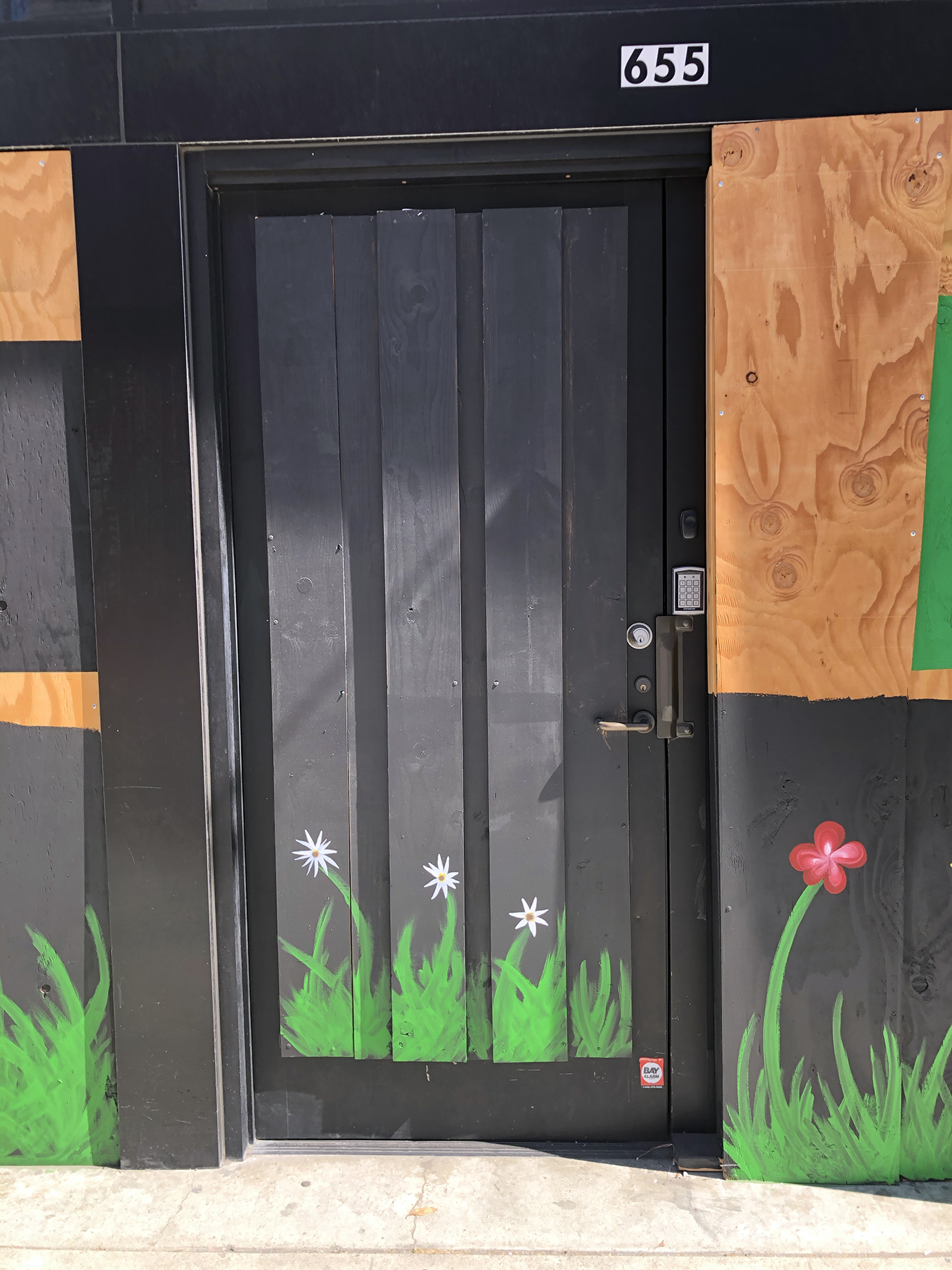On my way to the car I walked by this building on 4th St yesterday, after the announcement that the Grand Jury had not held any officers responsible for the shooting death of Breonna Taylor in her own home.

The words of James Baldwin rang true more than ever.

The stenciled art along the walls only reinforced that sense of despair in view of the cruelty extended to those deemed barely human, subject to slavery and free for the killing.

Henry Box Brown (1816-1889) had himself put in a steamer trunk to escape slavery near Richmond, Virginia and shipped 250 miles via boat, horse-drawn carriage and train to the Philadelphia Anti-Slavery Society. Upon passage of the 1850 Fugitive Slave Law, Brown left the United States for England and worked as a featured speaker in England’s abolitionist circuit.

Emmett Louis Till (1941-1955) was fourteen when he was tortured and killed in Mississippi after allegedly having insulted a white woman (he whistled at a store clerk.) Armed men kidnapped Till, slashed out one of his eyes, and tied a 100-pound cotton gin fan around his neck with barbed wire. Till was severely beaten, shot in the head, and thrown into the Tallahatchie River. Two fishermen found Till’s mutilated and unrecognizable corpse three days later. At a later trial, the all-white, male jury deliberated for only sixty-seven minutes before acquitting the two murderers, the clerk’s husband and his half brother. Historically no jury in the State of Mississippi had ever convicted a white person for killing a black person if the crime involved sexual aggressions towards a white woman. Four months later, Bryant and Milam admitted to the murder to journalist William Bradford Huie for an article that appeared in Look magazine. They received $4,000 for their interview.

Ada (Mother) Wright fought for justice her two boys, aged 13 and 19, who were among the nine black youths were arrested in 1931 at a place called Paint Rock, Alabama, and accused of the rape of two young white women on board a train from Chattanooga, Tennessee, a charge that was subsequently withdrawn by one of the women. The youths were quickly tried in the nearby town of Scottsboro, pronounced guilty, and sentenced to death. Mother Wright, a poorly educated Southern woman who was a domestic worker and had never spoken publicly, embarked on a tour through Europe to appeal for her sons’ lives. The Scottsboro case, with the help of many progressive organizstions in the US and abroad, made it to the Supreme Court where the death penalty was not upheld, although many of the youths were held and mistreated in prison up to 20 years later.

Marcus Garvey (1887-1940) was a Black nationalist and Pan-Africanist influenced by Booker T. Washington. His program within the Universal Negro Improvement Association (UNIA,) located in Harlem by 1917, resonated with Southern Blacks who fled for the industrial North, returning Black WW I veterans, working class urban Blacks. It focussed on industrial education, economic separatism, but also strict social segregation, which led to his naive belief he could cooperate with the KKK, since both organizations believed in “pure” race. This garnered the wrath of African American leaders and multi civil rights organizations, which led first to imprisonment and eventually to deportation to his place of birth, Jamaica. He never recovered his political fortunes and died in London in 1940.

Bobby Seale (1936-) was a cofounder and Chairman of the Black Panther Party, founder of the War on Poverty program, and one of the Chicago 8 defendants accused of inciting a riot outside of the DNC in 1968. After his arrest, he requested that his trial be delayed so his lawyer could recover from surgery. When denied a delay he requested that he represent himself, which the presiding judge, Julius Hoffman, also refused. When Seale made repeated attempts to represent himself in court, Hoffman ordered Seale to be literally bound and gagged. Hoffman then sentenced Seale to four years in jail for contempt of court.
Today he is a political activist, community organizer and lecturer. Here is an interview with him from 2 months ago. “You cannot fight racism with racism. You have to fight it with solidarity.”

Claudette Colvin (1939-) refused to give up her seat in a bus to a White person 9 months before her more famous compatriot, Rosa Parks, became a cause celèbre. Colvin was promptly arrested, taken to the city jail, and was charged with disturbing the peace, breaking the city’s segregation ordinance, and assaulting policemen. She went to Montgomery juvenile court on March 18, 1955. She was found guilty, sentenced to indefinite probation and made a ward of the State. The conviction started a boycott movement, the Montgomery Bus Boycott. Colvin served as a witness in the eventual Supreme Court Case, Browder v. Gayle, which explicitly overturned Plessy v. Ferguson, ending segregation on buses.
Here is the song played at Baldwin’s funeral.






Carl
Thanks, Friderike. That Baldwin quote is powerful.
Sara Lee
A powerful, painful, haunting display on the 4th Street building. Good of you to extend its message in this way.
Sam Blair
I’m with Baldwin. Where is the fucking outrage???